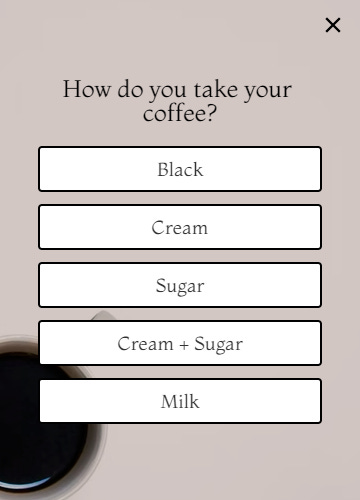How Zero-Party Data Boost the Customer Experience
A few years ago, the CEO of a fairly large corporation told his leadership in a meeting that data was the future of their company.
Collecting big data through their online store and their retail stores, they were gonna be data-driven. There was a big hoopla about it inside the company.
6 months later, the senior data analyst was forced to quit by the CTO because he wouldn’t fudge the data to align with what the CEO wanted to hear.
Data-driven right out of the company…
Data Hoarding…
I don’t think the story above is an isolated incident. People in business would like to believe that they are Homo Economicus, but in the real world, people make decision based on opinions, egos, and politicking far more often.
So businesses collect a ton of data. So much so that they cannot sift through it all to make sense of it.
It just gets collected. And collects dust. Piles up. Until it is enough to refer to it as historical data. Fancy.
However, if we tried, we could be doing a hell of a lot better about using data to improve our marketing and businesses.
What is Data…
Before we get started, let’s cover the definitions of each type of data as it related to ecommerce:
Third-Party Data:
Third-party data is information collected and aggregated by outside services and accessible through their platforms. Google and Facebook would be prime examples. They track users on other websites, and you can use that for marketing purposed using their analytics and ad services.
Second-Party Data:
This is information that is purchased by you from another organization. Purchased being the keyword there. Gray area. Proceed with caution.
First-Party Data:
This is information that you collect about users on your own website. It is owned by you because you track it. The analytics on your website’s backend is first-part
Zero-Party Data:
Now this is where it gets interesting. This is information that you collect directly from customers because they intentionally gave it to you. Jon also referred to it as consensual data.
Ok, now that that is covered…
Data in use…
With all the changes surrounding data in ecommerce - Google to go cookieless, iOS updates, privacy laws - there is a lot of talk, or rather grumbling, about it.
Much of the talk is about workarounds or fixes. People don’t like change. It means that you have to change how you’ve been doing things.
Change is a four-letter word
Now, I don’t think these changes are necessarily bad or detrimental to ecommerce businesses. But I am not an expert in this realm.
So I called an expert… Jon Ivanco. And what he says will blow your mind.
Intent is the keyword here.
Jon and his partner built Formtoro so popups can collect zero-party data, which as we recall is the data that is intentionally given by the customer to the business.
It is intentional because it is information given as a direct response to a question. Like this example:
Zero-party data is typically collected by popups, quizzes, and on-site surveys.
Formtoro uses popups. Which Jon has a specific reason for… popups are where you are entering your email in order to get a discount code, a behavior deeply ingrained in online shoppers habit, which is when the soon-to-be-customer is at their highest intent to make a purchase.
Intent.
But regardless of when or how, collecting this information is not the purpose. It is not a trophy to put on the wall. It is to be used. And used strategically.
Let’s do an example.
Say you sell pizza ovens, and you want to collect some zero-party data for your marketing:
Remember that this information is attached to their email…
So now you can separate these customers by into 3 different buckets - one for “nNever Tried”, one for “I’m OK, and one for the Master dough-heads.
Let’s just say that half of those who signed up are masters… if your standard Welcome Email series only talks about how to make a pizza from scratch, you will bore half of everyone that is interested.
But if you separated them, you can talk about your advanced temperate control for getting the perfect crisp and char on the crust to the master half, and how to make a simple crust to the newbies and novices.
Now on the other hand.
What if I were a data scientist and could give you the perfect third-party demographic data set for pizza oven buyers:
Age
Gender
Employment status
Martial status
Income level
Zip Code
etc…
Which one would be more useful to you?
I’ll bet you a pizza oven you’d choose the first one…
No time like the present…
As they say, the only constant is change, so instead of worrying about what worked before not working… let’s reshape our mindset to take on how it is evolving.
That is where you will find the opportunities… the ones your competitors will miss if they are busy grumbling about things they cannot control.







